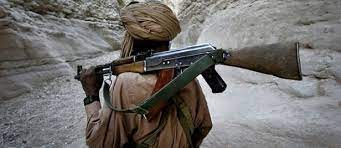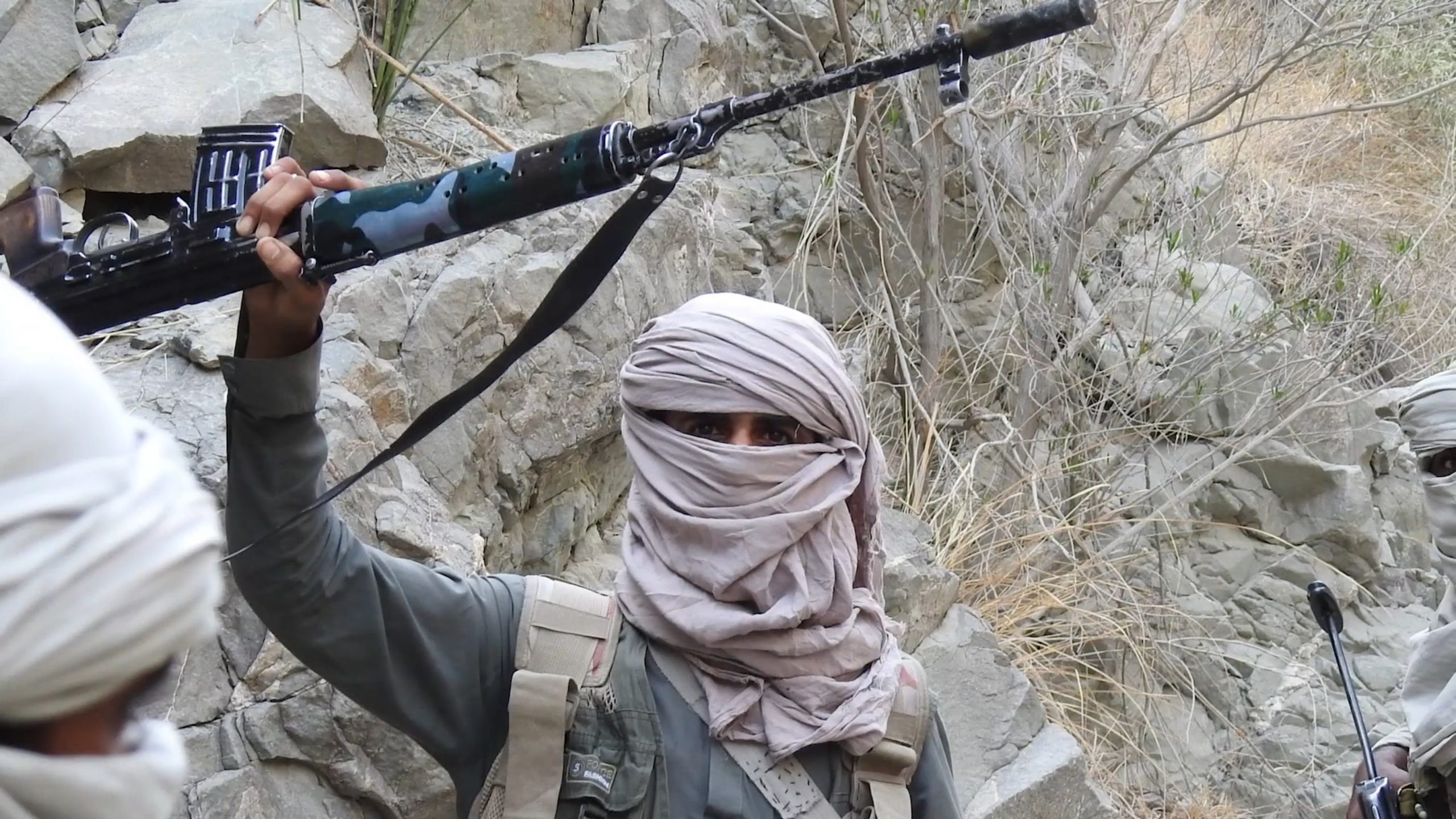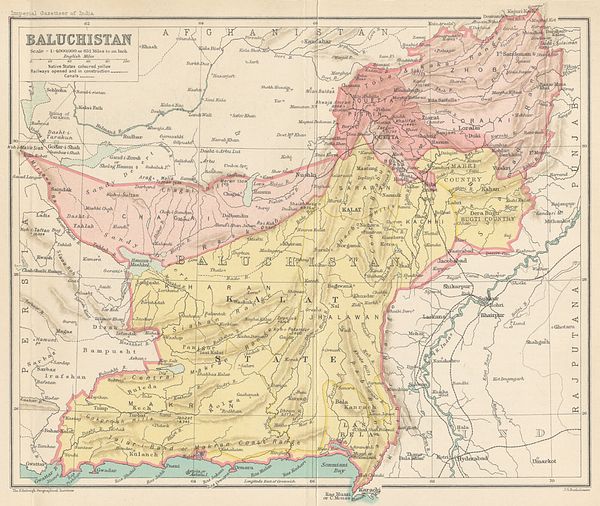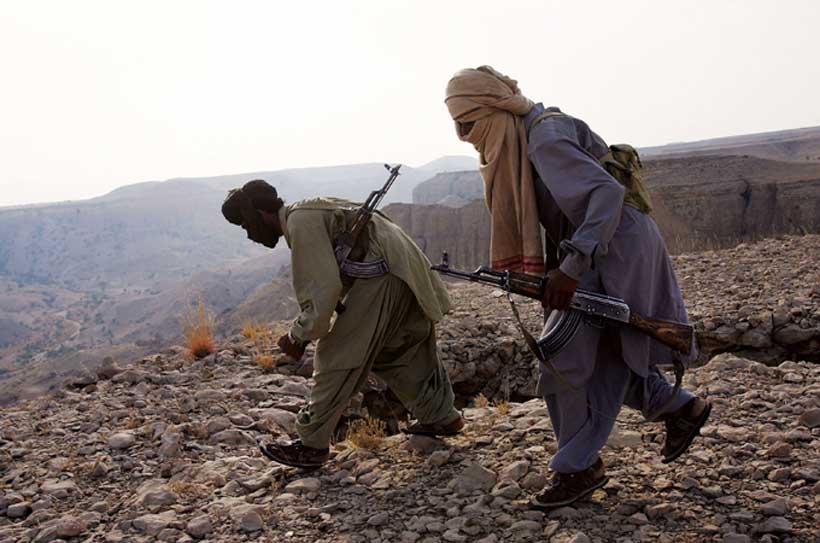
The insurgencies of 1948, 1956, 1973-75 and the present unrest in Marri-Bugti and Mekran areas since 2005 where military operations resulted in huge human and property losses are the ultimate result of many factors.
Dr. Mansoor Akbar Kundi
Introduction
Insurgencies and its methods are one of the oldest modes of warfare against established order. Insurgents are non-state actors involved in doctrinal, tactical, and strategic tactics against state actor(s). Insurgencies in large have secessionist tendencies caused by social, economic and economic injustices and inequalities. They in large are the product of undemocratic and authoritarian societies which are inclined towards change in status quo. Insurgent movements entail three major purposes: struggling for autonomy or more autonomous status; the sabotaging or controlling of the government; and breaking away from the state with internal and external support as determining factors.
Balochistan, since 1947 has faced four insurgencies with internal unrest and military actions. The insurgencies of 1948, 1956, 1973-75 and the present unrest in Marri-Bugti and Mekran areas since 2005 where military operations resulted in huge human and property losses are the ultimate result of many factors. The important of them are the lack of power sharing; sense of ethno-centric nationalism; financial grievances and praetorian ruler type role of army in politics.
This article is an attempt to highlight insurgency factors in Balochistan. The paper is divided into two parts. Part one will highlight in short the three insurgencies during 1948-75 and the unrest and military actions since 2005, while the part two will focus in large on the factors accountable for the insurgencies and unrest.

Insurgencies
Insurgency involves doctrinal, tactical, and strategic tactics by non-state actors to fight a stronger state actor force for a cause. In order words insurgency is in large targeted against the state order. The term insurgency has been differently defined. The Joint Publications of the Defence Department of US defines insurgency as an “organized movement aimed at the overthrow of a constituted government through use of subversion and armed conflict”. O’Neill defines it as “struggle between a non-ruling group and the ruling authorities in which the non-ruling group consciously uses political resources (e.g., organizational expertise, propaganda, and demonstrations) and violence to destroy, reformulate, or sustain the basis of legitimacy of one or more aspects of politics.” In Gallagher’s viewpoint “insurgency is an organized armed political struggle” with multiplicity of the control of the government, breaking away from the state, or more autonomous status. To him, insurgents in large have less resources than the dedication to the cause. They must be understood before they are countered. The important tactics of the insurgents are guerrilla warfare, strikes, demonstrations, target killings, coercion and the destruction of economic and political symbols. They include attack on military installations and taking away of weapons. The basis of the insurgency can be political, economic, religious, or ethnic, or a combination of factors. But political factors leading to the crises of legitimacy and participation are determining factors in the development of insurgencies. Insurgency is a kind of asymmetric, low intensity, or guerilla conflicts with political power as one of the major pursuits of insurgents. It has internal and external support which play an important role in its intensity. An insurgency without internal and external support is short lived and easily subdued. The decisive or motivating factors in the success of an insurgency are quality of leadership; an effective organization; favorable terrain which can restrict the mobility of the security forces; an effective intelligence system for observing the pattern of activity of security forces; the quality of insurgents with good training; safe sanctuaries in neighboring countries; and exemplary conduct of insurgents for garnering popular support.
1948 Insurgency: The first insurgency was led by Prince Karim, the younger brother of Khan of Kalat. The problem began soon after Khan of Kalat on 15 August 1947 unilaterally announced independence. This led to bitter dialogue between him and Quaid-e-Azam until April 1, 1948 the Pakistan army attacked his palace actually in Kalat city and forced the Khan to sign an instrument of accession. The Khan’s declaration of independence as head of the state made him lost his status and privileges he enjoyed under the British. This led Khan’s Brother Prince Karim in retaliation against the Pakistan government by moving to border areas of Afghanistan in May 1948. Prince Karim led a limited level insurgency against Pakistan government by saying that Mohammed Ali Jinnah and his grand colleagues, in whose hands the English have given the Government, wished to enslave our dear homeland, every inch of which was secured by our forefathers at the cost of blood. We are not prepared to be unworthy sons of our ancestors, we are resolved to fight for every inch of our homeland to maintain its freedom. The insurgency was also motivated by Prince Karim’s personal grievance about his removal from the Governorship of Mekran and replaced by Sardar Mirbai Gichki by the Pakistani authorities soon after the independence. Although his successor was in power for short as the seat of Governor was abolished, but it offended Prince in large. Prince Abdul Karim Khan decided to lead a national liberation movement for Balochistan. He invited members of the Kalat State Party as well as tribesmen. Many prominent tribal and political figures who had joined him included Mohamed Hussain Anka (the secretary of the Baloch League and the editor of Weekly Bolan Mastung), Malik Saeed Dehwar (the secretary of the Kalat State National Party), Qadir Bakhsh Nizamami, a member of the Baloch League and prominent members of the Communist-Party”, and Maulwi Mohammad Afzal, a member of Jamiat-Ulm-e-Balochistan. He moved to Afghanistan in order to get help and to organize the liberation movement there. He is said to have organized a liberation force called the Baloch Mujahedeen, comprising the ex-soldiers and officers of the Khanate’s army. His force included different ranks with him being the supreme commander.
The major demand of Prince Karim was the autonomy for Balochistan. While in Afghanistan he tried to secure help from foreign embassies in Kabul but did not see any success as the Afghanistan government was reluctant to let him continue his activities on Afghan soil. He was told by Afghan authorities either to live in asylum or return to Pakistan. Being under pressure from Pakistan government, in his absence, a farman by the Khan of Kalat was issued on May 24, 1948 according to which no connection of any sort with the Prince and his party was to be maintained nor any one helped him with manpower or ration, and those violating were to be punished. It discouraged the prince to use Afghan soil and returned to Pakistan.
Army action against his men was launched under the command of Maj. General Akbar Khan, then GOC of Balochistan who was assigned the task of dealing with the insurgency. The action involved the deployment of the Baloch Battalion under the command of Lt. Col. Gulzar. Gen. Akbar Khan 12 years later on August 14, 1960 in the Independence Day Supplement in his article Reminiscences of a Solider gave a detailed account of the military counters and skirmishes between the troops and the insurgents. Akbar Khan was interviewed by Quaid-e-Azam himself in Ziarat over the situation. He writes that Quaid-e-Azam was touchy about the incident and had a very soft corner for the Baloch tribesmen. He had directed GOC for quick solution of the situation without bloodshed. He also advised him personally not to release reports to the press about the military actions.
There were regular clashes between the army and his men in the remote hilly terrain of Balochistan. To avoid popular unrest in Balochistan, the Khan of Kalat sent his maternal uncles Hajji Ibrahim Khan and Hajji Taj Mohammed at Sarlath to bring Prince Karim back to Kalat. Khan made his return conditional. Prince Karim’s morale was down. The Baloch nationalists were divided into two groups. One favored armed struggle in the form of guerrilla war, while other which included Mir Ghous Bakhsh Bizenjo wished to resolve all issues through dialogue.
Losing internal and external support, it was hard for Prince Karim to continue his struggle. Under the circumstances he agreed to return to the Kalat and negotiated for his demands peacefully. He is believed to have been arrested while the negotiation were under why, but another fact is that he was surrounded and had no way except to surrender. He surrendered to Major-General, Akbar-Khan along his 142 followers and were taken to Mach jail. His surrender was unconditional. Prince Karim was tried along many his followers by Jirga constituted by Agent to Governor General and headed by Khan Sahib Abdullah Khan, the Additional District Magistrate Quetta. He was sentenced to ten years of rigorous imprisonment and a fine of Rs.5000. He remained in jail until 1956.
1958-59 Insurgency: The second insurgency was led by Nauroz Khan. Nauroz Khan belonged to Zarakzai tribe and was the chief of Jhalawan, a position coming after Khan of Kalat and Chief of Sarawan or third in the Sardari hierarchy of the Kalat confederation established in 1666. The immediate case of the insurgency was the storming of the palace of the Khan of Kalat by Pakistan army and his arrest on October 6 1958. Khan was arrested on the grounds that he was showing defection from Pakistan. Khan of Kalat describes the situation in his autobiography, Inside Balochistan as “The 6th day of October 1958 will ever remain fresh in the memory of the peoples’ of Balochistan; for it was on this day that the forces of tyranny, oppression and bloodshed were let loose on the simple and innocent Baluchs of Kalat for no fault of theirs……. I gave up myself to the army which paraded with me on the road and streets of Kalat. I witnessed several of my men falling dead on the ground by the indiscriminate firing of the army.”
This led Nauroz Khan to armed resistance. He had forwarded three demands to the government before he led the insurgency. They were i. the release of the Khan of Kalat and restoration of his power; ii. Abolishing of One Unit System or its non-applicability to Native Balochistan and restoration of the traditional rules (not defined); and iii. Exempt his area from the land reforms in offing by the government.
His insurgent action began by attacking Karghk Tehsil and killed Naib Tehsildar and threatened Deputy Commissioner Kalat to meet the same fate. His men ambushed government convoys and installations. His men were involved in hit and run raids on troops and government convoys. They did not attack civilians and private instalments. There were reports of looting private lorries/attacks carrying government men or goods. The insurgents respected tribal values and codes. They were spread largely on the area between Khuzdar and Wadh. The area comprising tough mountainous terrains was in those accessible by a shingle dirt road.
The struggle lasted for more than two years and gave the government very hard time. The action against them was conducted by a fighting brigade which was deployed in the Wadh and its surrounding areas. The brigade was under the command of Brigadier Mahmood Jan, a local of Quetta. The Chief of the Army Staff, General Tika Khan also participated in the campaign as Colonel. It involved casualties on both sides and day to day skirmishing in the mountains. Nauroz Khan finally surrendered on May 15, 1959 along his 163 companions. His surrender was the result of the deal brokered by Doda Khan Zarakzai, a tribal notable, on holy Koran. But the deal was not honored and rather the policy of “everything is fair in love and war” was adopted.

Nauroz Khan and his men were tried by a Summary Military Court in the Mach Jail. They were a total of 164 arrested. They were sentenced to different imprisonments. He, his sons and three others were sentenced to death sentences but Nauroz Khan’s sentence was commuted to life imprisonment due to his old age. As the plagues on the graves say, they were hanged on the same day on 15 July, 1960 but in different jails of Sukker and Hyderabd. They included Mir Wali Mohammad Zarakzai, Mir Ghulam Rasool Nichari, Mir Masti Khan, Shabzal Khan Zehri, Mir Bawal Khan, Jamal Khan and Batay Khan.
Nauroz was a proud and man of principle whose courageous resistance is not widely known. Those who knew saw him spoke very high of his nobility, courage and patience. He died in Hyderabad jail on December 25, 1965. He was sick and very old. Selig Harrison mistakenly narrates his death in Kohlu jail (p. 26). The insurgency fueled nationalists’ feeling amongst Balochs and became deeper and was expressed more clearly in the Balochi literature. Like music, dances and songs serving as cultural vehicles for expressing nationalism, his action, in Fanonian terminology, provided literature of combat. In Fanonian sense, the literature of combat plays an important role in the development of militant nationalism and motivating factor for further action.
It was true in case of Nauroz Khan whose struggle is regarded as a fight against tyranny and injustice. It provided literature of combat because it moulds the national consciousness, giving it form and contours and flinging open before its new and boundless horizons. It comes true in case of Balochistan. Where there are other factors such as common language, cultural heritage, and social values as the ingredients of Baloch’s consciousness, there are actions, events and heroes who struggled and breathed their last for the rights of Baloch nation including military actions.
1973-75 Insurgency: The third insurgency resulted in Marri-Bugti areas in 1973-75. It was the ultimate result of the worsening political situation after Z. A. Bhutto dissolved Balochistan coalition government under Ataullah Mengal. The Ministry was dissolved under the Interim Constitution of Pakistan 1972 after being in power from 1 May 1972 to 15 February 1973. The dissolution was seen as a big setback to Baloch rights, and was a major political blunder of Bhutto. After the removal of Ataullah Mengal, Jam Ghulam Qadir was installed as Chief Minister who commanded the support of only seven members. Those in opposition were 14 (later on many put behind bar under Hyderabad Conspiracy and other charges). Jam Ghulam Qadir continued as the head of the government in the province until 31 December 1975.
The 1973-75 insurgency was the biggest and severe of all. An army division was involved, including regular actions by the Special Groups Forces and Frontier Corps (FC). Insurgency started on May 18, 1973 when Marri tribesmen attacked convoy of Dir Scouts and killed a number of men. Commandos or Special Services Group (SSG) played a very important role in the insurgency and greatly weakened the insurgents’ tactics. The insurgency intensified after August 1973 when the government took leading Baloch leaders into custody. The insurgency continued until August 1975 after their militancy weakened and majority of the Marri tribesmen fled to Helmand in Afghanistan under the command of Mir Hazar Ramkhani and Sher Mohammad Marri. They were the part of the “Parari movement” which the both initiated. In Selig Harrison’s analysis, “was due to the fact that the Parari movement alive was to operate out of sanctuaries in southern Afghanistan. Leaving behind a skeleton force in Pakistan” Those migrated to Afghanistan returned in 1992 under the government of Taj Jamali after the federal government allowed and facilitated the honorable return of Nawab Khair Bakhsh Marri. Thousands of Marri started returning home through Helmand/Dalbandin route to Quetta.
The exact number of casualties was never exactly known, but it is believed to have involved “5300 Baloch and 3,300 troops killed”. There were many encounters between the insurgents and military during the period. Selig Harrison based on possible information from different sources say that there were 178; 84 took place in Marri area. The heaviest of the fighting was believed to have been fought in the Chamalang area on September 3, 1974. It left 125 Marri tribesmen and 446 soldiers dead with 900 Marri captivated alive. The action involved air raids by airforce with the use of Chinook helicopters, a kind of Huey Copra, with commandoes in action on ground, a decisive factor in the weakening of insurgents’ resistance. There are two versions of using Cobras. One says that Cobras were not used and they were rather Chinook. The other says that they supplied by Shah of Iran for suppressing insurgency were used for a very limited period as it feared leading to indiscriminate killing. The action involved innocent killing too. It included a German who in his military like Wagoner along his wife and two kids was traveling from India took the Rankni/Qumbaz en route to Quetta. He was mistakenly ambushed by insurgents and killed along his family; one son survived. I was told the story by Lt. Col. Farhatullah Umarzai of FF in 1990 who served in the area from 1973-77 was then a Major/Wing Commander with Loralai Scouts.

Military Actions in Balochistan since 2005
There has been unrest and military actions in Balochistan in Marri and Bugti areas since December 16 2005 the action began by army and paramilitary troops. There was unrest in some other parts of Balochistan which is the ultimate result of frustration-aggression due to rising discontent. They include attacks on government installation and target killing in many cities of the province with mining in Dera Bugti and Kohlu area.
The situation was worsened after the military action against Nawab Bugti in the Bamboor Mountains in Kohlu Agency on 26th August 2006 which resulted in the death of Nawab Khan Bugti. The action against Nawab, and his two paternal grandsons as well as a number of his sub-Sardars actually began in 2005. The three immediate causes were: the raising of a cantonment for brigade in Sui, growing military interference in Dera Bugti and Marri area for more drilling rights to Chinese, and support for rival tribal forces to Nawab by the government. The raping of Dr. Shazia by unknown persons poured oil on the flames after Nawab alleged military authorities for itself doing it in attempt to disgrace tribal values and people.
The skirmishing between Bugti tribes and forces already in progress finally led to the deployment of Frontier Corps and army in Dera Bugti area against the Nawab which went on for two months before he fled to the adjunct mountains in Kohlu area. The premises of his fort were captured. His death serves as a martyr role model for nationalists and non-nationalists in the pursuit of their interests. Similarly, military actions in Marri areas is abhorred in large and raised nationalists’ feeling. A major change in nationalists’ feeling after the incident is that they support the role of Sardars who are against government as the custodian of their resources.
The assassination of 42-year-old Balach Marri in Afghanistan was greatly resented in Baloch areas of the province including the cosmopolitan capital city of Quetta where there is a considerable settler population. The death of Balach is taken by Baloch elements as martyrdom of another Baloch hero and will boost nationalist sentiments at a time when the country is suffering from crisis of political development. Balach Marri who was known for leading guerilla warfare for the rights of the Baloch people. Balach like his father, Nawab Khair Bakhsh Marri believed in the doctrine that the Baloch couldn’t get their political and economic rights without an armed struggle. (Continues)
_________________
Courtesy: Central Asia – Biannual Research Journal published by Area Study Centre (Russia, China & Central Asia) University of Peshawar